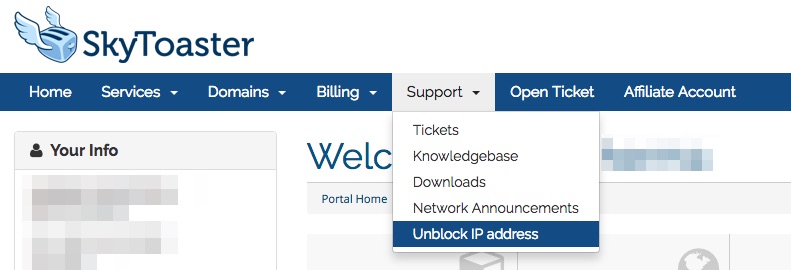I've been blocked from my site, what do I do?
Everyday servers are subjected to a wide range of attacks, focused on gaining access for malicious purposes. We take steps to protect our servers from these attacks using several different layers of security including, but not limited to firewalls.
These levels of protection normally go unnoticed, however in some instances legitimate traffic can be affected. This happens when suspicious behavior is detected, and the server takes steps to protect itself against the possible threat.
In the event you have problems accessing your email and/or website you can check if you were blocked using our unblocker. If you are blocked it will unblock your address and provide you with one of the following reasons why you were blocked.

Block Explanations and Solutions
cPanel: These blocks are normally caused by failed cPanel login attempts. You should check you have the correct login information. If you have forgotten your password it can be reset in our Client Area.
SSHD: These blocks are caused by failed SSH and/or SFTP login attempts. You should ensure you have the correct login, typically your cPanel username and password. You can also use Public Key files instead of passwords for increased security.
FTPD: These blocks are caused by failed FTP login attempts. You should ensure you are using the correct username and password. In the case of additional FTP accounts the username should be formatted like an email address.
IMAPD/POP3D: These blocks are caused by failed POP3 or IMAP login attempts. You should verify the login information on all devices is correct, it’s not uncommon for a mobile phone to not be updated for example.
SMTPD: These blocks are caused by failed SMTP logins. If you are unable to send email from a device, it could have the wrong login details causing the problem.
mod_security: You can think of mod_security as a form of firewall for your website, detecting potentially malicious activities and blocking them. If you are having problems with mod_security regularly blocking you, contact support for further assistance.
htpasswd: If you use .htaccess files to password protect a portion of your website, failed login attempts can trigger a htpasswd block. You should check your .htpasswd file to ensure you have the correct login information.
PERMBLOCK: Short for permanent block, this usually occurs after multiple repeat blocks. If you are unsure why this is happening you should contact support for further assistance.
For additional questions and assistance, contact us
